Robert Tyabji, Shah Alam, 2020
If you were to visit Mumbai, formerly Bombay, you would probably hate it. It's noisy, choked with traffic and rushing people, often smelly and always chaotic, even to jaded Mumbaikars.
But Hootoksi and I knew and loved our city before it morphed into the world's 9'th biggest metropolis. Home to 20 million people, it is India's financial hub, is home to the world's biggest movie production centre, Bollywood, and the country's fashion and advertising capital. Not to mention the array of major industrial enterprises by Levers, the Tatas, Godrej's, Birlas, Mahindras and dozens of leading Indian and overseas companies.
The city's history is fascinating. It comprised a group of seven islands which were colonized by the Portuguese (1543 - 1661) and then leased to the British East India Company. After the population in the city began to grow, the Company transferred their headquarters from Surat to the new city they called Bombay. The seven islands were finally merged into one single mass in 1845, and in 1853, the country's first railway connection was accomplished between Bombay and Thana. The city was under the rule of the Company until the revolt in 1857. The opening of the Suez Canal in 1869 connected Bombay with the rest of the world and resulted in the city becoming one of India's major ports.
Post-independence, the city expanded rapidly and many suburban towns such as Borivali, Andheri, Malad, Thana and Bandra were incorporated within its limits. In 1960, Bombay became the new capital of Maharashtra. Sky-scrapers, towering architecture, the Bombay Stock Exchange, the Race Course, clubs and hotels, tarred roads and a boom in the secondary and tertiary sector changed the city's status into one of the country's top four cities.
Bombay’s historic architecture was built on the foundations of public subscription, entrepreneurship, and philanthropy. Parsi industrialists and entrepreneurs, Hindu and Jain bankers and traders, Muslim and Baghdadi Jewish merchants, Armenians, Salsette Christians and English businessmen and bureaucrats invested in the future of this emerging city, contributing to the urban landscape during the rise of Bombay.1
The demolition of the fort walls in the 1860s created a vast expanse of open space for the once fortified town, giving the British an opportunity to implement an ambitious urban design scheme to position Bombay as Urbs Prima in Indis, ‘the first city of India”, and second only to London in the vast British Empire.1
Nowhere else in India is the British legacy so evident as in the city's beautiful Gothic Revival blend of architecture of public buildings like the Victoria Terminus (now renamed Chatrapati Shivaji Terminus), the High Court, Police Headquarters, Bombay University and its Rajabhai Tower, Crawford Market, institutions like Elphinstone College, St. Xaviers College, Wilson College and the Institute of Science; and art deco buildings such as the Eros Cinema and the iconic apartment houses that line Marine Drive and the Oval.
Click here to see what Bombay looked like 100 years ago.
 In 2009, my cousin Qais drove me around Mumbai on one of his vintage motorcycles and I photographed fleeting views of some of these architectural masterpieces.
In 2009, my cousin Qais drove me around Mumbai on one of his vintage motorcycles and I photographed fleeting views of some of these architectural masterpieces.
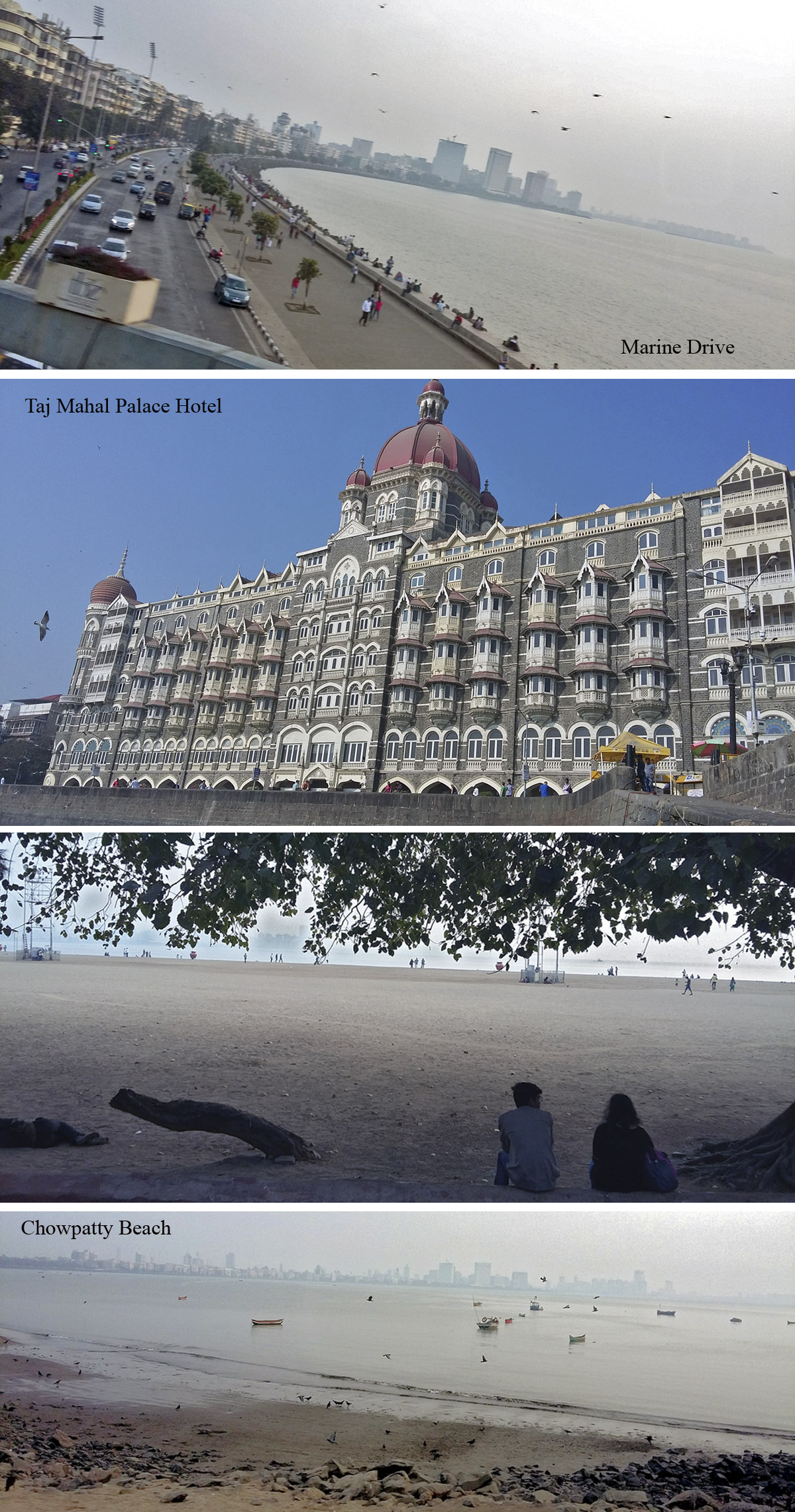
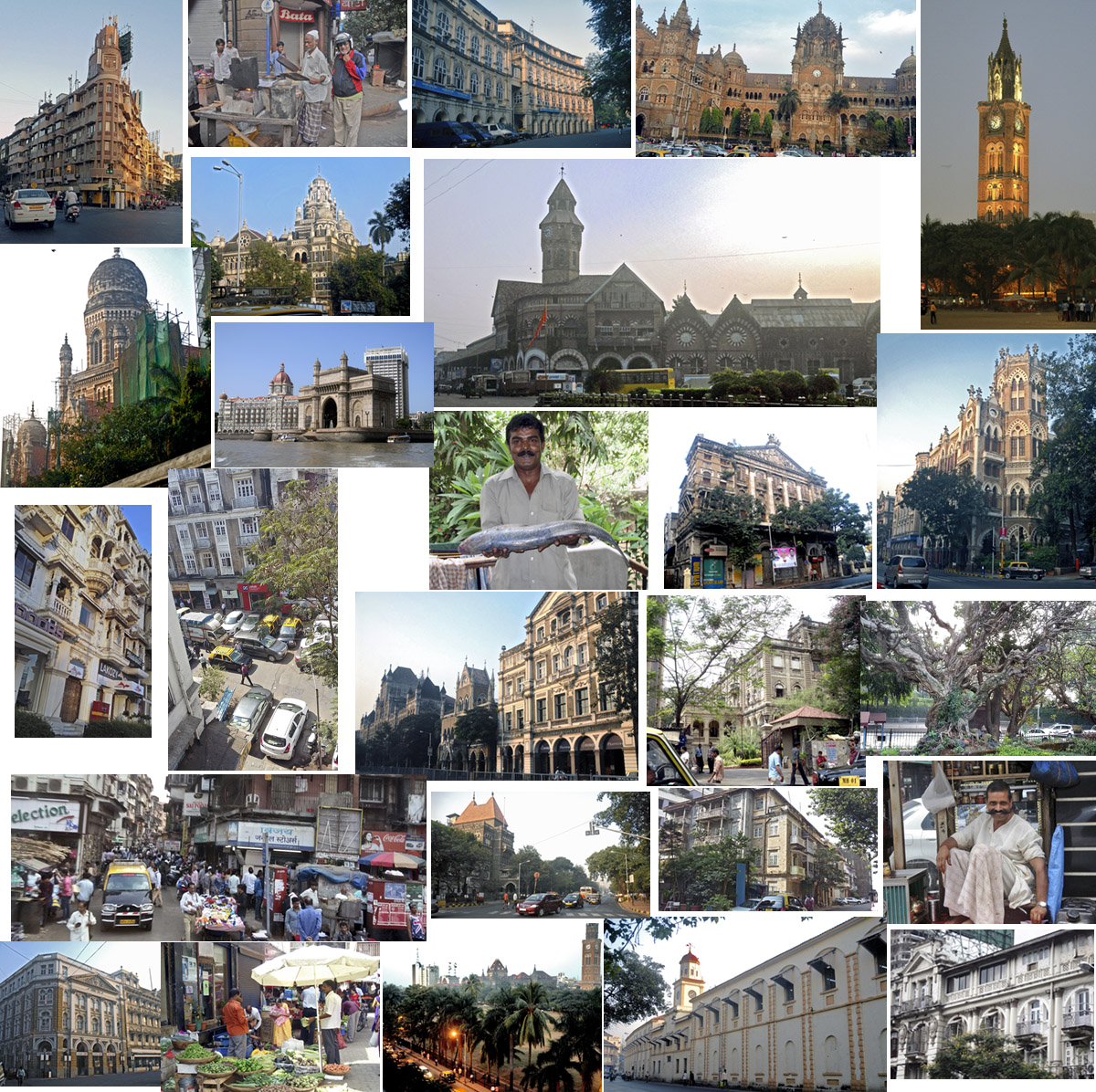
1 Adapted from The Rise of Bombay: Contribution of Parsis to the World Heritage Site by Conservation Architect Sanaeya Vandrewala.
Here are 10 wonderful cartoon images of Bombay. Each captures an unforgettable characteristic of this fantastic city and its inimitable denizens, the Mumbaikars as they are known today. Artist: Paul Fernandes.
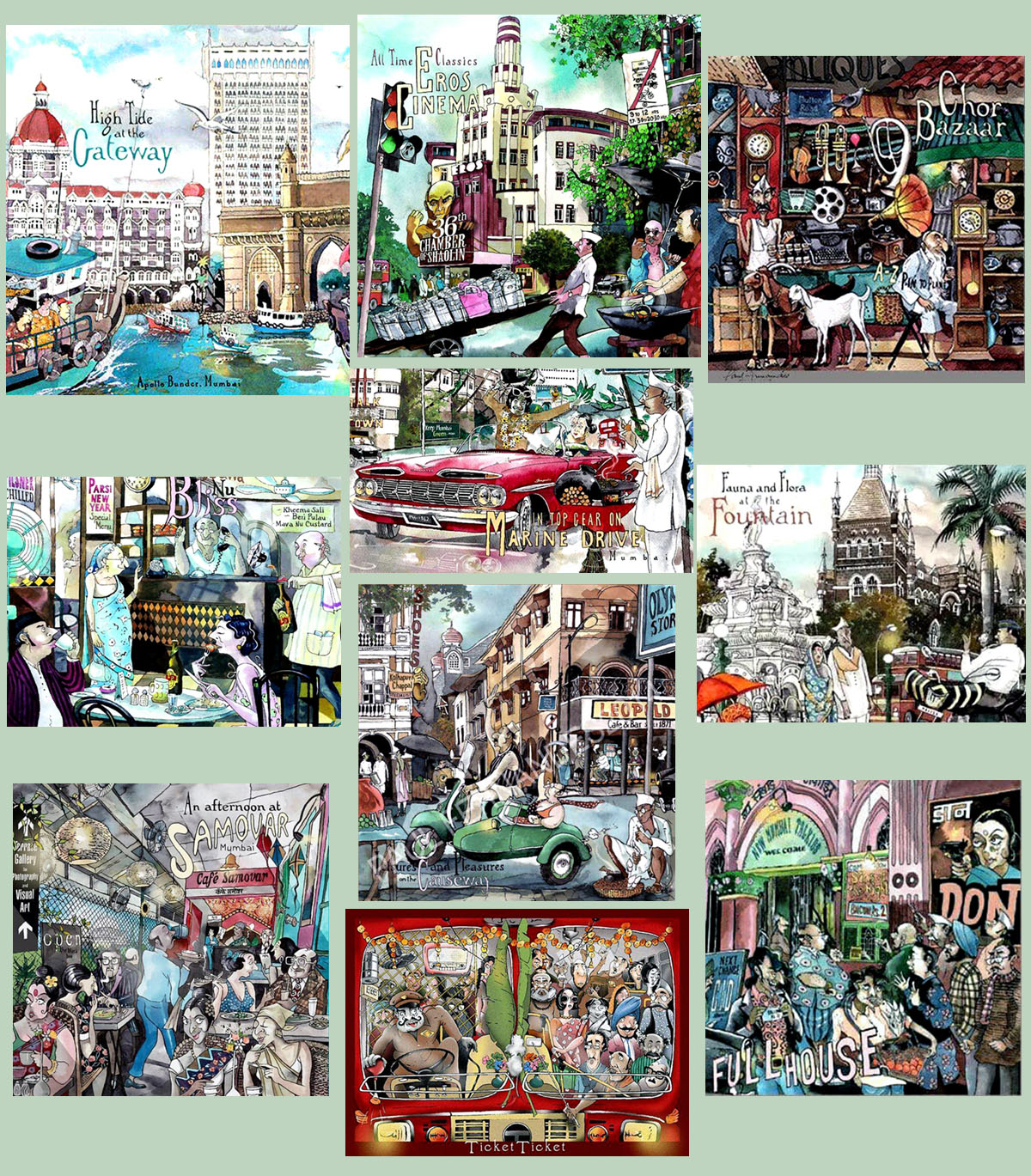
Growing up in Bombay
Robert Tyabji
My parents moved from Europe to India just before the outbreak of the second world war. They lived in my grandmother's house at Chowpatty until it was sold, then moved into Somerset Cottage right next to what is now Sophia College1, which previously was the residence of my great grandfather Badruddin. The college, our house and the other buildings on Sophia College Lane were on a slope, the western, sea-facing side of Cumballa Hill. Granny had her separate wing in the cottage while Mum and Dad, my sister Ursula and I had our own bedrooms. A wide veranda ran along the entire front of the cottage, which was raised about 8 feet off the garden below, with a low basement underneath for storage. The spacious living and dining areas were off to one side, and the large pantry and kitchen were at the back. Stairs and a covered passageway led to the servants' quarters behind the house. A large garage with living quarters for the driver and gardener and their families was located at one end at the bottom of the garden. A long gravel driveway from the gate by the road led to the steps of the house. The large one-and-a half-acre garden sloped downward in three graded levels from the house to the road which was concealed by a high hedge.
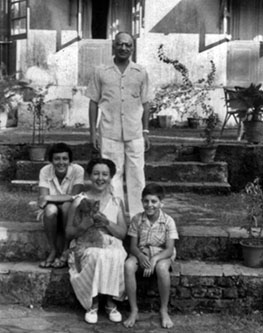
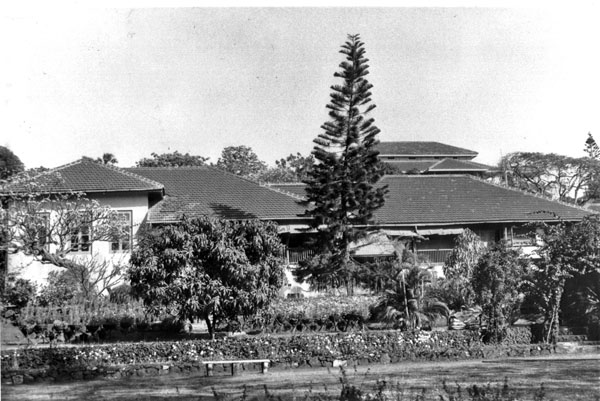
The house and garden were the ideal environment for a growing boy, offering myriad opportunities to explore nature and play games. There was plenty of wildlife; lizards, mice, snakes, beetles and birds of all types abounded. According to family legend, the garden was home to a pair of cobras which would be fed milk by my parents. I would spend most weekends in the garden with schoolmates and friends from the neighborhood, exploring and playing childhood games. My closest friends from school were Virat Gidwani, Adi Cooper, Jack Haskell and Farokh Kanga, now Virat and Farokh are no more. My parents often had their friends over for small tea parties in the garden. One had to be very careful with one's sandwiches as they'd often be snatched from one's hand by kites swooping down from the sky!
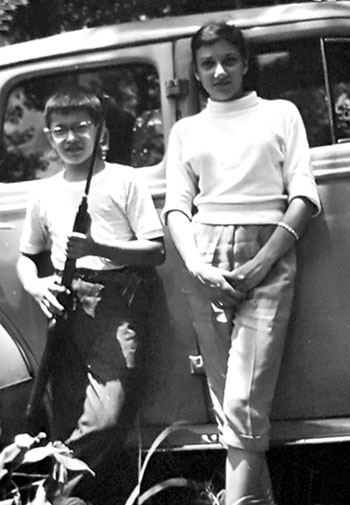
1The Sophia College campus area and the land in the vicinity belonged to the British East India Company, and was later subdivided and sold. The property changed several hands before it was acquired by the Society of the Sacred Heart in 1940 from the Maharaja of Bhavnagar. A part of the property was given to the Parsi family of Ashburner in the early 19th century. The bungalow which is now the main building was named Somerset House after Sir Henry Somerset, one of the commanders-in-chief of the Bombay Presidency. In 1882, the property was acquired by my great grandfather the Honourable Badruddin Tyabi. He built Somerset Annexe, the nucleus of the present science building. In 1917, Hormusji Nosherwanjee Vakeel bought the property and added the east-west wing. In 1923, the house was occupied by the Maharaja of Indore before the Maharaja of Bhavnagar bought the house in 1937. In 1939, Archbishop Thomas Roberts S. J. of Bombay invited the Sacred Heart nuns to start a women's college in Bombay and in 1940, The Society bought the property.
The School Years
Updated May 2020
My folks enrolled me first in the Hill Grange kindergarten on Pedder Road, then in Walsingham Primary at Breach Candy, and finally in the city's reputedly best high school, the Cathedral and John Connon Boy's School in the downtown Fort area. The school had, and I believe still has, a formidable reputation for excellence. It has since grown and expanded; the boy's and girl's schools which were in separate buildings and on different streets have been merged and the institution now boasts five separate sections; the pre-primary section located in the St Thomas' Cathedral compound, the Infant School on Malabar Hill, the Junior School on M.G. Road, the Middle School on Maharishi Dadichi Marg, and the Senior School, the one I attended, on what is now called Purshottamdas Thakurdas Marg.
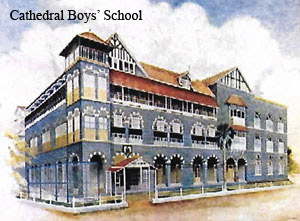
My years at school were possibly the most important as that's where my values were solidified and I became more self–reliant, learned to love the outdoors, developed a spirit of adventure and intellectual curiosity and an appreciation and respect for community and citizenship. It's also where my deepest friendships grew and have endured to this day.
When I finished my HSC in 1959, I had just under 70 classmates, divided in two classes because of our numbers. Of these, 13 had passed on by the time of this writing. There were 31 teaching staff including Mr. Gunnery and Mr. Pharoah, Headmaster and Vice Head respectively.
Click to hear the Cathedral School Song
MY CLASSMATES
I was particularly close to Jack Haskell, Virat Gidwani, Farokh Kanga, and Adi Cooper. Jack used to live in St.James Court, one of those wonderful art deco buildings on Marine Drive, where I was a frequent visitor. Jack was an enthusiastic jazz drummer and we used to jam, Jack on his drum set and me on the box bass to jazz blasting from his hifi speakers. Dave Brubeck, Duke Ellington and other greats of the era were our favourites. Both Jack and I were ardent dabblers in audio electronics. Together we designed and built a hifi stereo amplifier and speaker units and offered our services under the name HT Works. Here's a copy of the manual of the HT Works' Hi Fi Amplifier Model A1-3S.
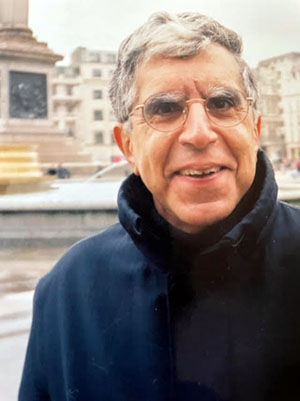 Jack later migrated to the US, became a chip designer in Palo Alto, CA, and married Toni. He took up the double bass and used to play with jazz groups in the Bay area. He subsequently suffered a debilitating Parkinson's disease and passed away on 5 December 2022.
Jack later migrated to the US, became a chip designer in Palo Alto, CA, and married Toni. He took up the double bass and used to play with jazz groups in the Bay area. He subsequently suffered a debilitating Parkinson's disease and passed away on 5 December 2022.
Here's a list of the boys in my class:
Abdulwahab Zayani, Adi Cooper, Andrew Gordon, Anil Ruia, Armeane Choksi, Arun Sethi, Arvind Thadani, Ashok Ruia, Ashraf Hussain, Atul Kapadia, Baji Modi, Basil Wirth, Darius Chaina, David Colaco, Dileep Hurry, Elijah Elias, Ellis Hayeem, Gerald Bird, Hasnain Chinwala, Jack Haskell, Jacob Mathan, Jehangir Adi Moos, Jehangir Sethna, Joseph Joseph, Khurshed Balsara, Mario Rodriques, Mark Sopher, Narayan Acharya, Naubir Mohindar, Neelam Lalkani, Nihal Kaviratne, N J Akaney, Noel Ezekiel, P Byramji, Percy Mistry, Peter Miovic, Ramesh Mirchandani, Ratan Singara, Rai Mahendra, Ralph David, Sam Ghadialy, Shabir Ahmedbhoy, Shashi Bhalla, Soli Mody, Sudhir Anand, Sujit Bhattacharaya, Trevor Newnes, Venkat Kurma, Vijay Nayar, Vijay Shivdasani, Vikram Kamdar, Vikram Savara, Vikram Singh, Vinay Dabholkar, Viney Sethi.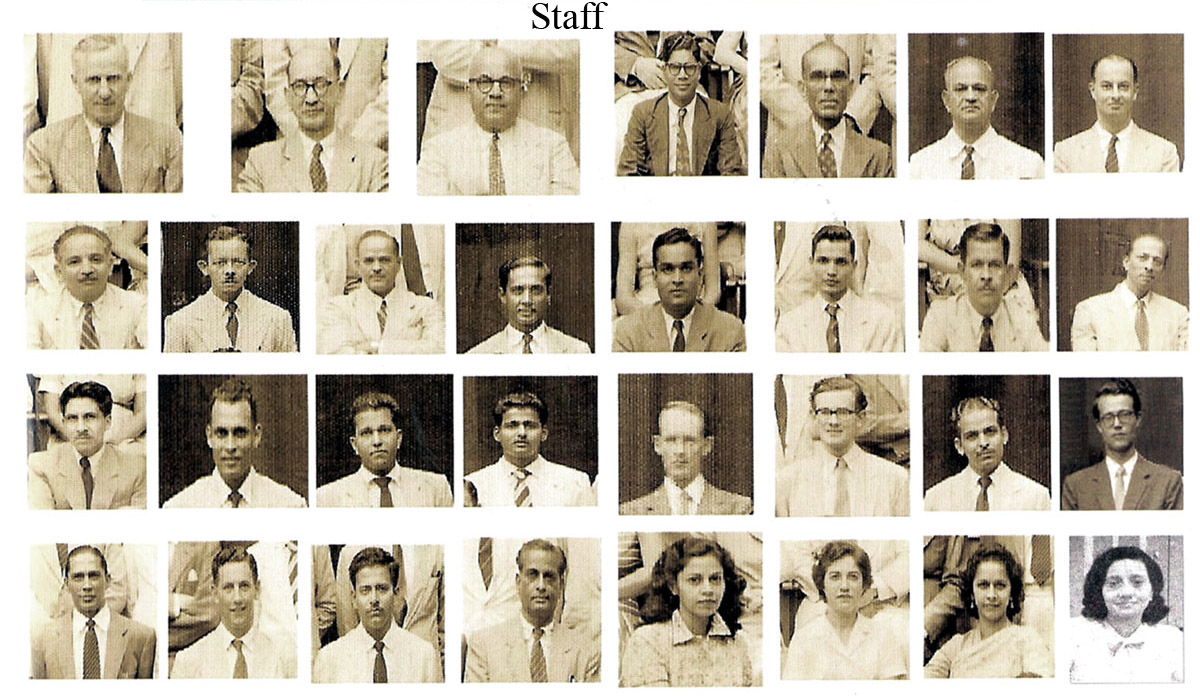
In 2009, 50 years after all of us had graduated from school and most were already in retirement, Jacob Mathan, who had earlier created a Cathedral Class of 59'ers Google group, organized a reunion in Mumbai, which included a whole week of partying and visits to Ashok Ruia and Madhu Kapoors' homes in Mandwa. Madhu's husband, my classmate Ashok Kapoor, and otherds, had been gunned down the previous year in the terrorist attacks on the Taj Mahal and Oberoi Sheraton Hotels. The remarkable thing was that I immediately recognized my classmates even though I hadn't seen any of them in 50 years!
My friends and I spent a lot of our free time drinking coffee at Bombelli's or the other bistros is town, and going to the movies. Later in the evenings we would visit one of Bombay's vibrant restaurants with live jazz, if we could afford it.
![]()
There were no multiplex cinemas in those days, so the city's main English-language theaters like the Metro, the Strand, the Eros and the Regal were our regular haunts. "Meet me at the Regal" was a commonplace phrase. The Regal Cinema even had an underground car park in the 1930's.
Bombay Meri Jaan
Hootoksi Tyabji
My love affair with Bombay began the day I was born at the St Elizabeth's Nursing Home on Malabar Hill in Bombay.
Bombay evokes the happiest memories of my childhood, a carefree time, when all of life was filled with fun, laughter and love. In later years, Bombay was the city in which I experienced my first kiss, my first discotheque, my first job, my first year at University and it is the city where I met Robert, we got married in it and our first son
Michel, was born in the same Nursing Home that my sister Shehernavaz, my brother Kershasp, Robert & I had been born in. "Tommy" the nurse who assisted when we were being born, was at hand to cheer me on when Michel was on his way and her loud shouts "PUSH" "PUSH" "PUSH" annoyed and comforted me at the same time!
Here are some of the memories of my childhood in Bombay, they are embedded in me …
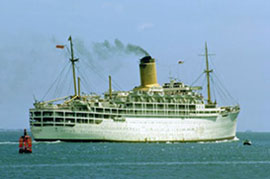 I was told by my parents that I was conceived on a ship, the Chusan. My mum who was blessed with a "pucca" regal, Parsi nose, prayed that her baby would not inherit hers. She wanted her unborn child to have a cute pug nose exactly like the one on the baby she played with on the ship! Her wish was granted and I arrived with the pug nose of my ma's dreams!
I was told by my parents that I was conceived on a ship, the Chusan. My mum who was blessed with a "pucca" regal, Parsi nose, prayed that her baby would not inherit hers. She wanted her unborn child to have a cute pug nose exactly like the one on the baby she played with on the ship! Her wish was granted and I arrived with the pug nose of my ma's dreams!
We lived in an apartment in an old building called Sekseria Sadan on Nepean Sea Road, which was the nest I loved and grew up in! We knew all our neighbors, played with their children, Jeroo on the top floor was, and continues to be a special friend, and most evenings we went to the beach, a 2 minutes’ walk from our apartment. Cousin Aban and I would make up stories and solve imagined mysteries and my friend Nazneen and I would ride our tricycles for hours on end on the beautiful terrace of her apartment in Colaba.
We had no garden to speak of, just a little strip of earth in front of the flat where tiger lilies grew in great profusion. I remember collecting caterpillars from the leaves and putting them in a shoe box till they grew into butterflies!
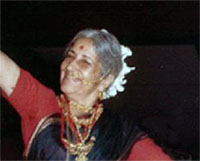 Our house was always filled with music either from the old Grundig record player that stood in a corner of our living room, or from my mother practicing her scales and her songs for one of her performances. Roshan Pundole was a well-known soprano in Bombay, one of the few Western Music singers in her time, and she sang every week on All India Radio. She was also a category ‘A’ playback singer for Bollywood and would take me along with her to the studios for sessions that sometimes lasted all day!
Our house was always filled with music either from the old Grundig record player that stood in a corner of our living room, or from my mother practicing her scales and her songs for one of her performances. Roshan Pundole was a well-known soprano in Bombay, one of the few Western Music singers in her time, and she sang every week on All India Radio. She was also a category ‘A’ playback singer for Bollywood and would take me along with her to the studios for sessions that sometimes lasted all day!
In our dining room we had a beautiful old Victorian styled table with 12 chairs, and we ate all our meals around it, often with friends who just dropped in for a visit! Before the meal we held hands and said a Parsi Grace. We had to eat whatever was on offer and we couldn’t leave the table till every morsel had been polished off our plates!
Mum often had parties in our house, and they were legendry! Apart from the scrumptious food, music was always a part of the fun; mum played the piano and we had lots of percussion instruments in a box that was brought out and everyone was handed something to play. Bongo drums, cymbals, bells, castanets, sticks and a Mexican fish that made an amazing sound when you ran a stick over its grooves! There were games and laughter and so much fun!
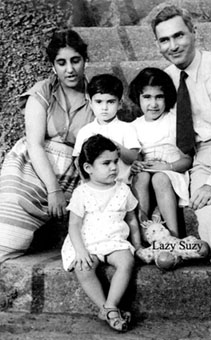 Memories of my parents in our apartment in Bombay abound! My papa was a businessman and was also known as “the Father of Lionism” in India. He introduced Lionisim in India, Singapore, Malaysia and Thailand. He traveled a lot but when he was home he would hoist us up in the air on the soles of his feet and we would snuggle up in bed with him while he tried to shoo us off saying “go away you double beans, you are making my bed too warm!” I haven't a clue why the three of us reminded him of double beans!! I would sit on his lap as he read the newspaper or studied some lines from Freemasons Lodge book!
Memories of my parents in our apartment in Bombay abound! My papa was a businessman and was also known as “the Father of Lionism” in India. He introduced Lionisim in India, Singapore, Malaysia and Thailand. He traveled a lot but when he was home he would hoist us up in the air on the soles of his feet and we would snuggle up in bed with him while he tried to shoo us off saying “go away you double beans, you are making my bed too warm!” I haven't a clue why the three of us reminded him of double beans!! I would sit on his lap as he read the newspaper or studied some lines from Freemasons Lodge book!
My sister, brother and I would beg him to "take us to London” and he would respond “Sure, start walking!”
Mum always spouted sayings to us in Gujarati and English, “Honesty is the best Policy” “Two wrongs don’t make a right” and “An idle mind is a devil’s workshop.” She was a no-nonsense kind of woman who spoke her mind and love was always dispensed with a good dose of discipline!
We learned from the actions of our parents about compassion, obedience, respect of our elders, and kindness.
We were taught to question and form our own opinions on everything from religion, to politics to culture and to see all human beings as equal no matter where they came from or what their backgrounds were. We were encouraged to speak the truth and though we were raised in the Zoroastrian faith, we were encouraged to visit churches, mosques and temples and to learn about other religions while practicing the simple credo of ours “Good Thoughts, Good Words and Good Deeds”
Bombay was a very safe city and I was allowed to walk to my piano lessons on my own when I was just seven years old. My teacher lived at Kemps Corner, a kilometer from our house. I was also allowed to travel on the BEST double-decker bus, I loved sitting on the top, paying the conductor for my own ticket, and watching the city unfold below!
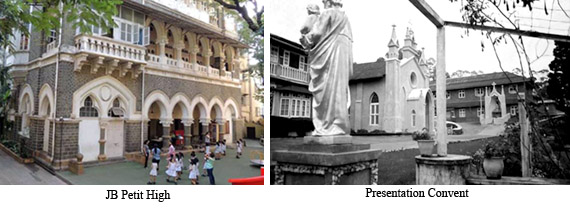 I started school in Bombay along with my sister at the J B Petit High School for Girls. My brother went to Cathedral & John Connon Boys School. I have happy memories of my time at J B and remember my school bus and the hymns we belted out while standing in straight lines, in starched blue uniforms at morning assembly. I also remember the old school bell under which I sat to eat my morning snack always holding court and telling tall tale about animals that I had never seen or experienced! I was in J B Petit School till the age of nine, then I went to boarding school in Kodaikanal in the Nilgiri Hills of South India.
I started school in Bombay along with my sister at the J B Petit High School for Girls. My brother went to Cathedral & John Connon Boys School. I have happy memories of my time at J B and remember my school bus and the hymns we belted out while standing in straight lines, in starched blue uniforms at morning assembly. I also remember the old school bell under which I sat to eat my morning snack always holding court and telling tall tale about animals that I had never seen or experienced! I was in J B Petit School till the age of nine, then I went to boarding school in Kodaikanal in the Nilgiri Hills of South India.
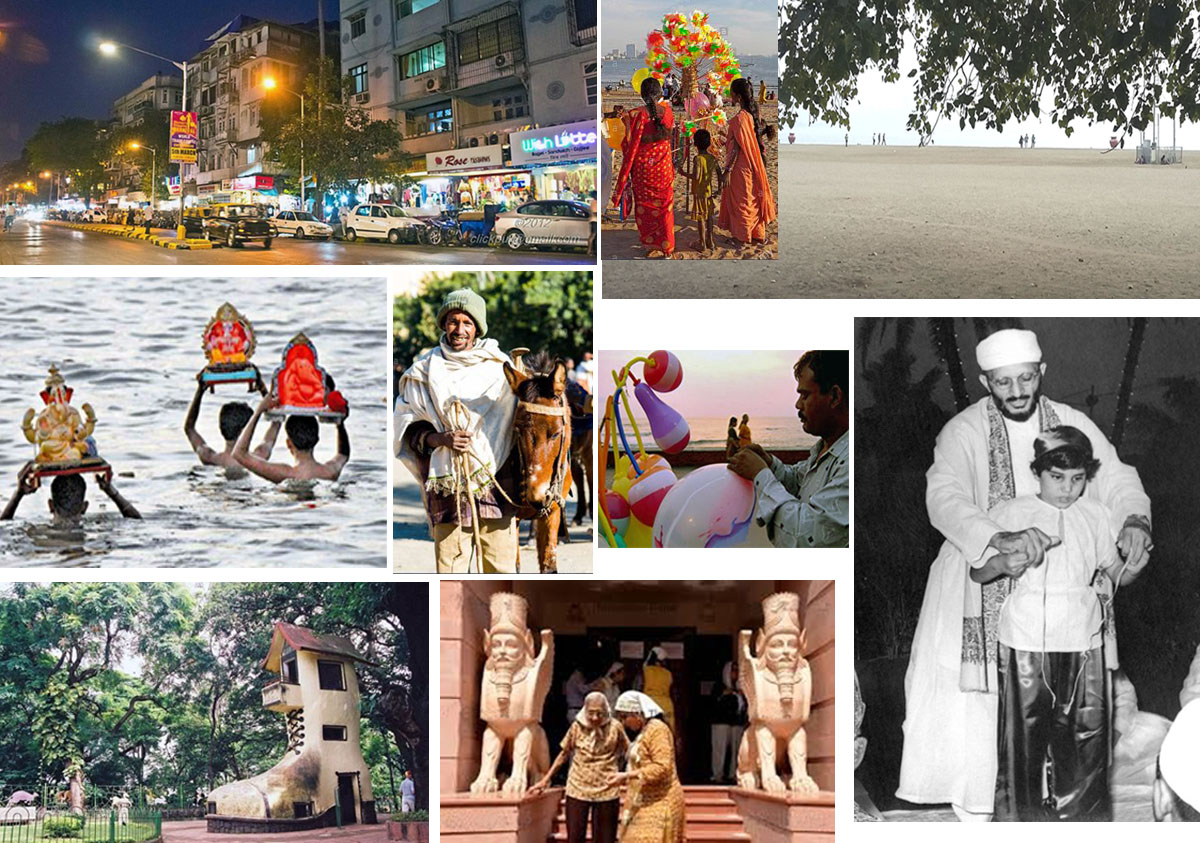 The memories of the Bombay of my childhood include walking along the streets of Colaba Causeway and buying a new pair of shoes once a year at the Metro shoe shop. It was the excitement of going to the circus and to see “Holiday on Ice,” it was going to Chowpatty beach for “Bhel Puri” and watching thousands of people immerse “Ganpathy” in the water on the festival of Ganesh Chthurti. It was going to Breach Candy with our maid Cathy to ride the ponies and to buy a balloon from the balloon man, it was going to Hanging Gardens and climbing in and out of the Old Ladies Shoe, it was getting dressed in new clothes and going to the Atash Behram (fire temple) with hundreds of other Parsi worshippers on Navroze.
The memories of the Bombay of my childhood include walking along the streets of Colaba Causeway and buying a new pair of shoes once a year at the Metro shoe shop. It was the excitement of going to the circus and to see “Holiday on Ice,” it was going to Chowpatty beach for “Bhel Puri” and watching thousands of people immerse “Ganpathy” in the water on the festival of Ganesh Chthurti. It was going to Breach Candy with our maid Cathy to ride the ponies and to buy a balloon from the balloon man, it was going to Hanging Gardens and climbing in and out of the Old Ladies Shoe, it was getting dressed in new clothes and going to the Atash Behram (fire temple) with hundreds of other Parsi worshippers on Navroze.
I had my Navjote at the Colaba Agyari when I was nine, the highlight in the life of every Parsi child! I loved the Dasturji (Parsi Priest) Minocher Homji who taught me my prayers and performed the ceremony. He exuded kindness and I loved going on the bus by myself to his fire temple for lessons. Goody Servai's band entertained us and I went on stage and sang "Hang down your head Tom Dooley, hang down your head and cry, hang down your head Tom Dooley, Oh boy! you're going to die" quite an odd song to have picked for my Navjote!!
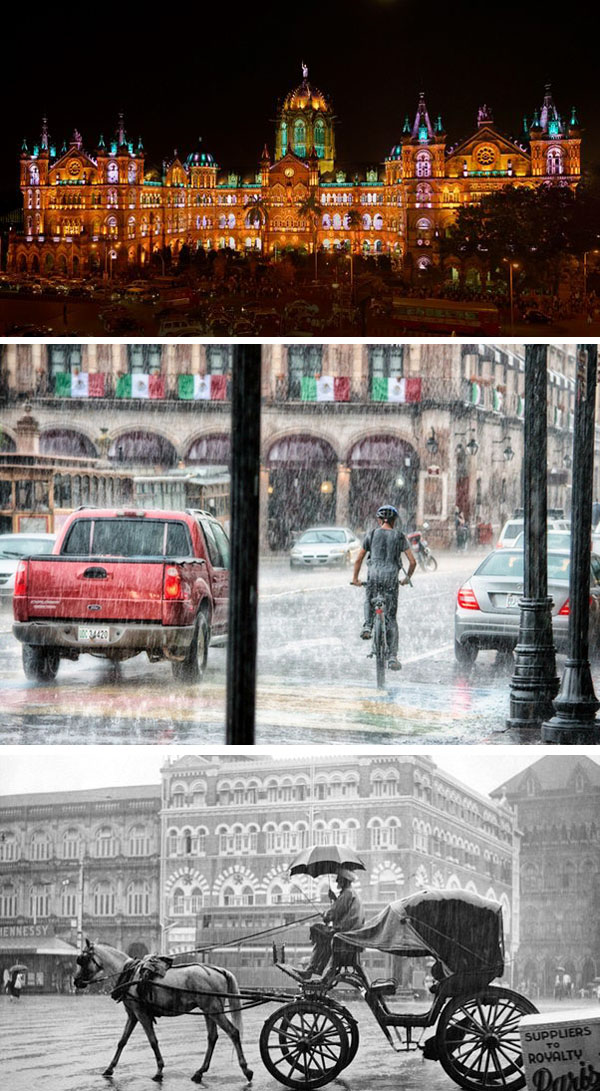 On Republic Day the entire city was lit up in lights and there was a competition, the best lit building won a prize! Our family along with thousands of others piled into our Consul car and joined the traffic jams to see the amazing displays!
On Republic Day the entire city was lit up in lights and there was a competition, the best lit building won a prize! Our family along with thousands of others piled into our Consul car and joined the traffic jams to see the amazing displays!
I loved the monsoons in Bombay. The rain would pound down and there were puddles to splash in and often schools were closed! Every year mum took us to Crawford Market to buy a new raincoat and “gumboots”
As a special treat we would go for a Gora Gari (horse drawn carriage) ride up in the city.
We seldom went out to eat and going to the Nanking Restaurant for Chinese food and to Kwality’s for a Triple Sunday Ice cream was a rare treat!
We had an incredibly happy childhood. Apart from my parents who loved us unconditionally, we had grandma, uncles, aunts, cousins, and friends whom we visited regularly and who showered us with love and goodies. We spent many fun times with Granny who lived with Naju Aunty, Kali Uncle and Freny aunty, little Lale and Dadiba in their flat upstairs in Colaba. Maki aunty, Uncle Nariman and cousins Rumy, Jimmy & Diniar lived in the same apartment building in their flat downstairs. Most Sundays we all met for lunch and had a wonderful time! Maki aunty had a fox terrier dog called Princess whom she loved dearly and I wanted to have a dog like her but my ma kept telling me that looking after a dog was like looking after a baby and she didn't want a 4th child!
The happiest day in my life in Bombay was the day my Uncle Cavas and Aunty Roshan presented me with a little puppy on my 7th birthday. He was the cutest honey coloured dachshund whom I adored and we called him Happy!
Picnics and excursions were regularly planned and enjoyed. We often visited Meher Masi, Uncle Bohman, and cousins Deena, Gulcheher and Navaz in their beautiful bungalow in Bandra. Uncle Bohmn was a well-known architect and his passion was gardening so the house was surrounded by an exquisite garden. My uncle Sarosh was in the Navy and we visited him and aunty Roshan at their beach house in “Hamla” which was a couple of hours drive from our home. We often spent weekends with Phi masi, Uncle Jimmy, Gitanjali and Rashid at their holiday home in Aksa, Malad. On all these outings in the car, we always sang our hearts out. "Daisy Daisy", it’s a long way to Tipperari", and "She’ll be coming round the Mountain" were hot favorites!
Every summer during the school holidays we went with Cathy on the train, a twenty-four-hour, overnight journey to my maternal grandparents in Bangalore. Some years my cousins Kaikoo, Cyrus and Anahit joined us.
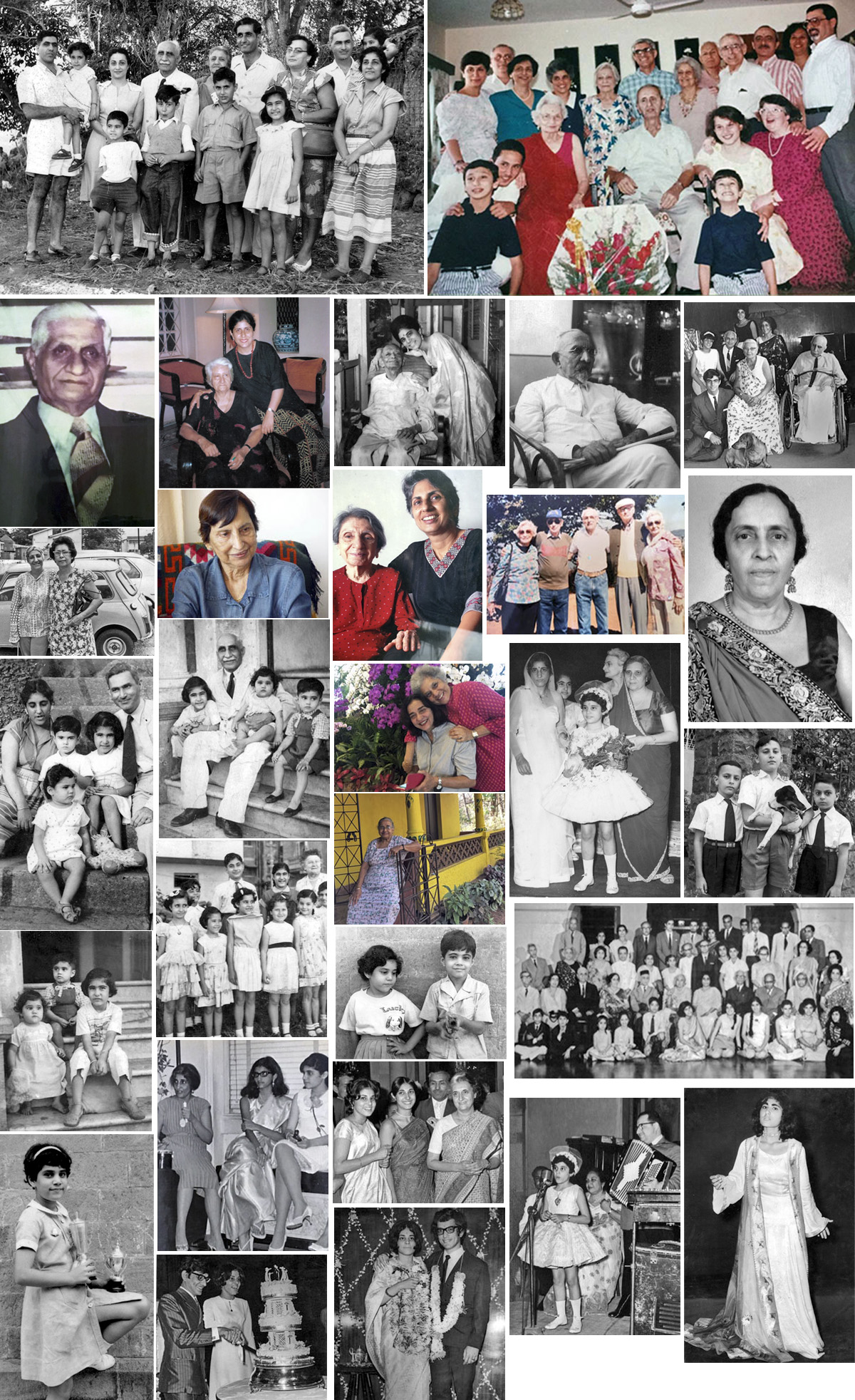
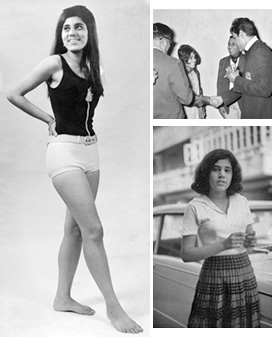
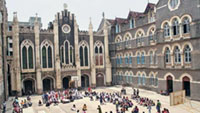
In 1968-1969 when I was home from boarding school, I went to St Xavier’s College and that was a time when I experienced Bombay differently, it came alive for me! I wore miniskirts, smoked bidi’s because I couldn’t afford cigarettes, ate in dives all over the city and had juvenile boyfriends! One such specimen would drive me down the lanes in Opera House in his dad’s Studebaker wanting to run over rats in the lane! He never did! I frequented jazz bars and discotheque (Blow up at the Taj hotel, the only one in its time) went to parties skipped college classes and ended up at Western Outdoor Advertising doing a part time job for the uncle of a friend who turned out to be Robert’s ex-boss and that’s how we met! Those were the days!!
Video, Aerial views of Bombay 100 Years Ago - Aerial Views
Video, Aerial views of Bombay 100 Years Ago - Kala Ghoda
Video, Aerial views of Bombay 100 Years Ago - Schools
Video, Aerial views of Bombay 100 Years Ago - The Architect
My Bombay's Dhobitalao
Robert Tyabji: From an email from my classmate Shabir Ahmedbhoy, 4 October 2011
“In a certain generation not too long ago, if you said Dhobitalao, you meant Little Goa.
“In Toronto, Canada where I live, there is little Italy, little Greece, little Portugal, little India and even, just outside of Toronto, an entire suburb (officially called Brampton) known as Khalistan, where all the Sardars live. Brampton used to be a farming area populated by whites, until the Sardars moved in. Now it is a place which abounds in Punjabi samosas, sarson-ka-saag and 'lawyers' who 'help' you with settling personal injury car accident claims. But you will not find any little Goa.
“Now, to get back to Dhobitalao.
“That area of Bombay was home to a large dhobi (washerman) migrant community from Uttar Pradesh that worked from a pond that was originally built by the Parsis to supply their Agiaries (temples). Over time, as the water got stagnated, they turned it over to the dhobis who needed exactly such a spot to base their trade in the city. Eventually, the pond was cemented over and the Parsis built residential buildings which they gave over as rentals to newcomers in Bombay.
“It was exactly in such a condition that the first Goans started moving in. Soon the area was overflowing with Goan migrants who chose to live together, God knows why, given the crab mentality for which the community is famed. Not only did they live in harmony, but also in relative peace, although a typical large family of seven or eight lived in one room no bigger than 300 to 500 sq feet.
In that space they hatched, matched and were dispatched.
Dhobitalao, as I knew it, was Goan enough to be known to the rest of Bombay and even outside and the Middle East, as the Goan hub outside Goa. Among well-known features of the area were oases of large rooms of about 1,500 sq feet or more in very old dilapidated buildings that became the homes of Goan Village Clubs, about which much has been written. What I will add is, that the living conditions there were absolutely pathetic. But then, living in Portuguese Goa of the time was equally so, despite the large village spaces.
“If this description has put in your mind a decrepit neighborhood you would not be entirely wrong, but I have not yet made a reference to the vibrancy of the place. Dhobitalao was the Bronx of the 1930s. People hung out their washed clothing to dry and sat on their building terraces. The terraces were the community arenas where every social celebration took place. A birthday, a dance and even movie shows. Everyone was invited, both from the building and everywhere else. Prohibition was in force and Aunty's famous rotgut was served.
“On one occasion, while learning German from a Saligao resident of Indra Bhuvan, I was called to watch a movie on the terrace. The boys running the projector sat precariously with their equipment on a small patch on the roof, the white painted wall was the screen and the bar was set up along one side.
“There were all kinds of home-cooked snacks on a table, and everybody sat hunched on the floor in the dark of an 8 pm evening. I don't remember the name of the movie, but it was smuggled in by the Goan usher of the nearby Metro cinema. There was dancing after the movie, but by then I had left as I had a long hike back home to Byculla.
“Dhobitalao's Main Street extended from the Sonapur Church (Dolours) to Crawford market, a distance of about 1 km. Along the way were butcher shops selling fresh pork, and the famous C.D'Souza's and Vienna restaurants which were frequented by lonely sailors between trips.
“They served excellent Goan-Bombay fusion food at ridiculously low prices. In 1965, you could get a plate of sorpotel, a loaf of bread and Crumb Chops (pork chops fried with batter and breadcrumbs) followed by a plate of rice with fish curry and a fried mackerel on the side, for just a few rupees. It was excellent value!
“On Dhobitalao streets, other restaurants abounded. Along Main Street were also a couple of wax candle shops. Thinking about it now, I wonder what kept them in business. Perhaps it was the yearly fairs at which body parts made of wax were sold. Main Street was the showpiece of Dhobitalao. Other side streets were not so clean, nor as spacious.
“There were the Wellington Terraces, a group of four buildings within a rough stony compound that was a village all by itself. Everybody in Dhobitalao had a relative or villager in Wellington. Outside Wellington were all sorts of trades-people - tailors, darners, cobblers and others. All were excellent craftsmen and I remember my dad taking me to a cobbler there to custom make my leather shoes even though we lived in Byculla. Perhaps part of the reason might have been the opportunity to visit one of his friends where a glass of hooch was assured.
“Within Dhobitalao on the southern and eastern ends, were the Irani restaurants about which the Canadian-Goan writer Marcos Catao has recently written. Two of them were Sassanian and Bastani. They made the best bread puddings and the most flaky and light meat patties that melted on your tongue. The pani-kum chai (milky tea) was a great chaser to these snacks.
“A little beyond Bastanis was the standing place of the 'Dhobitalao Bandsters'. These were not band members but individual musicians who waited to be hired for any wedding or other occasion. They were not a cohesive unit and may never have played with the others, but once they were selected, without practice, they performed as if they were an accomplished orchestra.
“That is a great thing about Goans. They make awesome musicians. Partly in the genes and partly due to their village choir-master training, playing is across the spectrum. In all the great Bombay swing bands of the sixties and seventies, like Micky Correia, Johnny Baptist, Maurice Concessio, Goody Seervai, Nelly, Ken Mac and Hal Green, the majority of the musicians were Goans. Nowhere could this be seen better than in Dhobitalao.
“A walk down the street of any neighborhood, especially after sunset, would produce harmonious wafting sounds of lilting Portuguese marches and sambas, tangos, classical mandos, and even Louisana blues and Hollywood music scores. It was truly a music fest per gratis.
“At the heart of Dhobitalao was the Sonapur (or officially, Dolours) Church. Women with sleeveless dresses were sent away from the Communion railing without the host, and the ones without veils or scarves on their heads were publicly berated. Khomeini must have learnt his state-craft from the Sonapur priests.
“But these same priests did not bother the menfolk. These they considered to be without redemption. As soon as the priest stepped on the pulpit to start the preaching, the men made off to C.D'Souza's next door for coffee and cigarettes. What they didn't hear, they didn't care about!
“The vicar even attempted to put a loudspeaker inside C.D'Souza's so as to disturb all conversation there during sermon time, but that only resulted in coffee-talk rising many decibels higher. Eventually their volumes outdid the loudspeaker, permeated the church and disturbed the semonizing priest himself. Finally, the vicar conceded defeat and removed the loudspeaker.
“Religious feast processions winding through the streets of Dhobitalao were very unruly. There would be a massive crowd of people setting out from the church but as each Aunty's speakeasy was passed along the way, the number of men would get fewer and fewer until at the door of the church on returning, the only males in the procession were either below fifteen or those banned from their favorite Aunty's bars due to non-payment, or the very frail who wanted nothing but peace with their God who they were due to meet soon.
“The boys and girls of Dhobitalao were indoctrinated in the value of education by their parents, whether they went to the nearby Jesuit school of St Xavier's or to Little Flower, St Sebastian, St Thresa's or Dolours. They might have had no place to study except under the dim lights of the passageways or during late nights with their parents' snores for company, but they learned their lessons well. Here in Toronto, there are many of those once-Dhobitalao youngsters. They are 'solid buggers' now and their children go for the best higher education there is in Canada.
“When my children were young kids growing up in Canada, we told them to eat their vegetables and not leave them. My wife used to tell them, "Think of the starving children in India and finish the dinner." And now they tell their children, "Finish your homework. Think of the children in India who would make you starve if you don't!"
Don't break anybody's heart, they have only one. If you are angry with them, break their bones, there are 206 of them – Author unknown.
Bombay in the Swinging Sixties
Robert Tyabji, Shah Alam, 2016
Bombay in the 50's and 60's, when I was in school and university, was the jazz hotspot of India, a title shared to a lesser degree with Calcutta, more about this in the article below. We jazz lovers spent a lot of time and most of our pocket money on coffee in the restaurants that featured live jazz, and I was amply rewarded when the jazz greats of the day, Dave Brubeck and Duke Ellington, among others, came through and jammed with the local musicians after their busy daytime engagements.
Click here to read this article on Dave Brubeck's visit.
I received this today from a classmate, Shabir Ahmedbhoy, and am posting it because it describes so accurately the Bombay I knew so well, my Bombay.
-Quote-
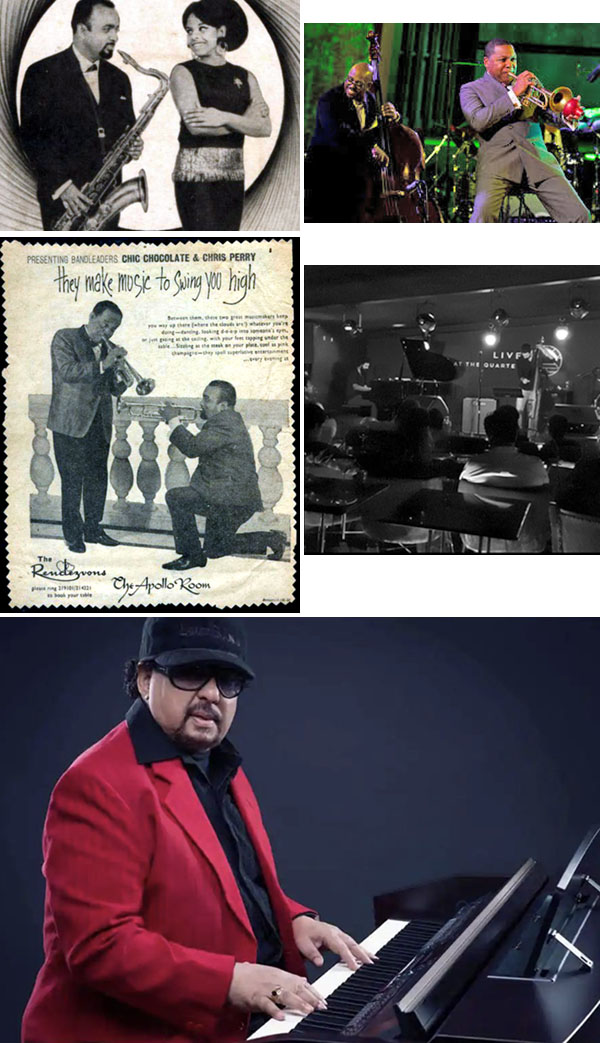 STANLEY PINTO, old Bombay boy, my classmate and leading night club pianist, describes the rocking times that the city was witness to in the 1960s.
STANLEY PINTO, old Bombay boy, my classmate and leading night club pianist, describes the rocking times that the city was witness to in the 1960s.
A few weeks ago, a man called Chris Perry died in Mumbai. The news didn't send even the tiniest ripple out onto the turgid waters of this restless megalopolis. In its headlong rush into tomorrow, Mumbai has become a city uncaring of the yesterdays from which its today is cast; constantly moulting, constantly and unconcernedly shedding memories of times past.
Chris Perry is one such forgotten memory of the great jazz age of Mumbai that once was Bombay. Alongside Hecke Kingdom and Norman Mobsby and Tony Pinto and Neville Thomas and Seby Dias and Sweet Lorraine and Wendy and... but I'm getting ahead of my story about the long-ago-and-far-away nightlife of Bombay. A scene of a hundred (or so it seemed) jazz dives and cabarets that made Bombay the centre of India's entertainment world in the 60s, 70s and 80s.
I discovered this exciting world as a 16-year-old in 1959 when I ran into Dorothy Jones on Colaba Causeway. Dorothy was the pianist who accompanied all comers on the late great impressario Hamid Sayani's Ovaltine Amateur Hour over Radio Ceylon, the FM radio of its time. Teetering on impossible stiletto heels, her red hair crowned by a magnificent tres chic turban, she enveloped me in a deliciously bosomy hug. Hello luv, how lovely to see you, do you still sing, how is your piano playing, you must come and see us at Berry's, come to the jam session next Sunday morning. And she was gone in a cloudburst of Chanel No.5.
Sunday morning couldn't come around soon enough. When it did, I ducked my mother after church, dashed off to the nearby railway station, and ten minutes later there I was at Berry's little restaurant, just past the Tea Centre on Churchgate Street. The band was already swinging: Dorothy at the piano was the Marian McPartland of Bombay's jazz. Her son Robin on drums, the elegant Percy Borthwick on bass and behind the largest dark glasses I'd ever seen, Dennis Rosario, a magnificent guitarist in the Barney Kessel style. A reed of a man, Georgie Rich, who later became a good friend, was doing a Mel Torme on Sweet Georgia Brown.
The joint, to use Cab Calloway's signature phrase, was jumping, and in ten minutes it changed my take on life in the fast line. I'd discovered the magical, mesmerising, unashamedly decadent and just slightly seedy world of life and dark.<p>
At the far end of Churchgate Street, just across from today's Jazz by the Bay (which didn't exist then) was the bistro Napoli. No live band but with Bombay's first and only juke box, very popular with the college set.
Almost next door was The Ambassador hotel, lair of Jack Voyantzis, it's Greek owner, a beautiful woman always on his arm, a giant Havana ever between his teeth. The restaurant at the hotel was called The Other Room and India's most reputed jazz agglomeration. The Tony Pinto Quartet, was in residence. Tony Pinto was a short, bald martinet of a man who drilled his band to perfection in polished, if somewhat pre-meditated, jazz arrangements. The quartet was fronted by Norman Mobsby on tenor saxophone, as aggressive as Coleman Hawkins, as gentle as Ben Webster.
The Other Room was where the well-heeled went to dinner. Every night was black tie night, and you were Social Register if Jack knew your first name and your wife well enough to kiss her gently on the mouth. The wives seldom resisted, I might add.
Fifty yards down was Bombelli's, Swiss restaurant. Advertising men gathered in its al fresco forecourt each evening, sipping the only genuine (or so people said) cappuccinos in town, made from a shiny, hissing coffee machine. A trio played at nights. It was all very Continental.
Right next door, over a fence so low you conveniently held conversations and exchanged criossants for pakodas across it, was Berry's. As Indian as it's neighbour wasn't. The Tandoori Butter Chicken to die for. And the Dorothy Jones Quartet with Marguerite at the mike, as the advertising said. A few years later, after Dorothy and all of her band had emigrated to the UK, I led my own trio there.
Across Berry's was the original Gaylord restaurant. The band was led by Ken Cumine, India's only jazz violinist, replete with soft suits of pure cashmere, a shiny white violin and radiant daughter Sweet Lorraine at the microphone.
Around the corner, just across from the Eros cinema, was the Astoria hotel with its famous Venice restaurant. Famous because this was the jazz musicians' jazz hideout. For years, the diminutive trumpeter Chris Perry led his quintet there. There was the incomparable Felix Torcato on piano; years later he moved to Calcutta, first leading a wonderful quarter and later a big band at the Oberoi Grand, with his spectacular wife Diane as partner and singer.
On tenor saxophone with Chris was his brother Paul, a happy laughing buddha of a man. And out in front was Molly, a singer in the Sarah Vaughn mould, one of the best we've ever seen in the country.
Some years later, the Astoria opened a second restaurant. They called it Skyline and it opened with a young alto saxophonist who was continued over the next three decades to dominate the Indian jazz scene. The man was Braz Gonsalves and what a heart-stopping quartet it was. Xavier Fernandes, the most cerebral pianist of his time, Leslie Godinho, the 'dada' of the Hindi film percussionists on drums and... dashed if I can recall the bassist. I think perhaps it was Dinshaw 'Balsy' Balsara, advertising art director and clothes horse who later went on to become one of Asia's most successful commercial photographers in Hong Kong.
When Chris Perry moved on to Calcutta, Braz shifted to the Venice. The quartet grew into a quintet with the addition of a tenor saxophonist. Leslie made way for Wency, the most dynamic young drummer of his era, and Bombay rocked to the Cannonball Adderley sound. For almost a decade Venice was the meeting place for jazz men from all over the country and indeed the world. Dave Brubeck visited and sat in, regal if a little incongruous in his particular jazz genre. Duke Ellington came two nights in a row after he discovered half his orchestra moonlighting with Braz and the gang. Venice was the Blue Note of India's swingingest jazz scene and would we miss a single evening of it? Perish the thought.
Across the road at the Ritz hotel was The Little Hut. Neville Thomas, one of the most dashing men around town, led a group called Three Guys and a Doll. The luscious Shirley Myers was the doll. (Thirty years later I met Shirley one evening at Jazz at the Bay and she's still a doll!) Later, when Molly returned from Calcutta to marry her piano player sweetheart Mervyn, they took over at The Little Hut for many years.
From that spot, it was a brisk walk past Flora Fountain, where, plumb opposite Akbarally's, were Bistro and Volga, the two most popular haunts of the younger set. Seby Dias held court at Bistro, with my school friend Johnny at the piano and a hugely talented young lady called Ursula at the mike. She was the daughter of one of India's best known orchestra leaders of the big band era. Chic Chocolate, as unprepossessing as Chic was dashing, and just as gifted. At Volga next door Hecke Kingdom's Quartet held sway. Hecke was India's only baritone sax man, a grandfatherly man, gentle and wise. In delightful contrast, the trio that backed him was more mischief than a tribe of monkeys. Richie Marquis on piano, Percy on bass and Maxie on drums. But what an unbelievable prolific trio it was. There probably hasn't been another like it since.
Off the beaten track at Kala Ghoda, around the corner from Khyber restaurant, suddenly, from nowhere, a restaurant called La Bella opened in 1961. And it opened with a British sextet called the Margaret Mason band, with Margie Mason herself on an enthralling instrument we had never seen before: the vibraharp. As college kids, we swiftly became habitues of the 11.00 a.m. coffee session. All it took was 75p for the Espresso, not to mention the continuous acts of petty larceny to find that princely sum six days a week.
And finally, across from the Yacht Club at Dhanraj Mahal, there was the Alibaba where now stands a Chinese restaurant. George Fernandes on piano, Cassie on bass and Louis Armstrong vocals. Wilfred on drums.
In time, riding the crest of the jazz juggernaut, these niteries were joined by clubs at the Taj Mahal hotel, the Oberoi, the Nataraj on Marine Drive, the Shalimar at Kemp's Corner, the Sundowner at the Sun'n'Sand, and restaurants like the Blue Nile at New Marine Lines, the Talk of the Town on Marine Drive and the second Bombelli's at Worli.
With them came new young stars. Iqbal Singh, the turbaned Navy ensign doing his frantic Elvis Presly thing. Bonnie Remedios, India's Fats Domino. Sunder the Gay Caballero. Not quite jazz but what the hell.
And there was this callow, beardless fellow, barely out of short pants, who sat in on five minutes' notice for pianists all over town when they called in sick. Tony Pinto gave him lessons in jazz progressions so he'd stop inventing ‘Chinese’ chords of his own. Hecke Kingdom advised him to think long and hard about wanting to make this life a profession, not for someone who has a subscription to TIME magzine, he'd say, only half jokingly. And the cabaret girls were inordinately protective of him because he accompanied them on the piano impeccably, not asking for ‘anything’ in return. Then, when he inevitably did, they'd grown to like him enough to gleefully acquiesce.
Life was grand.
Till one day it was gone. Suddenly, unexpectedly. Sadly. And much, much before it changed its name, Bombay metamorphosed into Mumbai.
We were left with a handful of memories.
Now they too are fading.....
-Unquote-
A note about my Bombay's iconic restaurants
Bombellis Restaurant in Breach Candy near the bottom of Sohpia College Lane and a mere 3-minute walk from my family home, was renowned for its brewed Cona coffee and selected Swiss dishes such as vienerschnitzel and sauerbraten (pronounced surbrat-e in Swiss German). The owner, Freddy Bombelli, was a family friend. His establishment with its indoor and outdoor ambience and chequered red and white tablecloths was my favourite hangout and rendezvous with friends. His Cona coffee knew no competition anywhere in the city and its effect on me would last for hours!
I recently came across a piece on Bombellis and other iconic Bombay restaurants of the period. It was written by one of Bombay's most famous copywriters, Freddy Birdie, and can be downloaded HERE.
